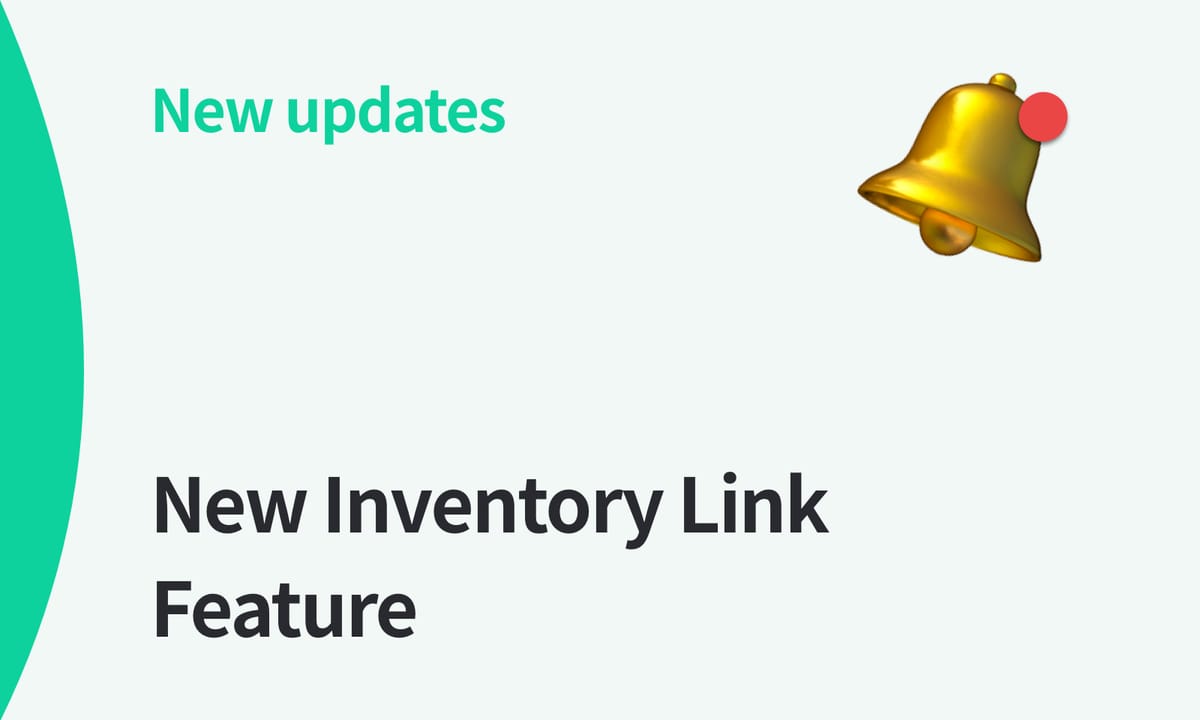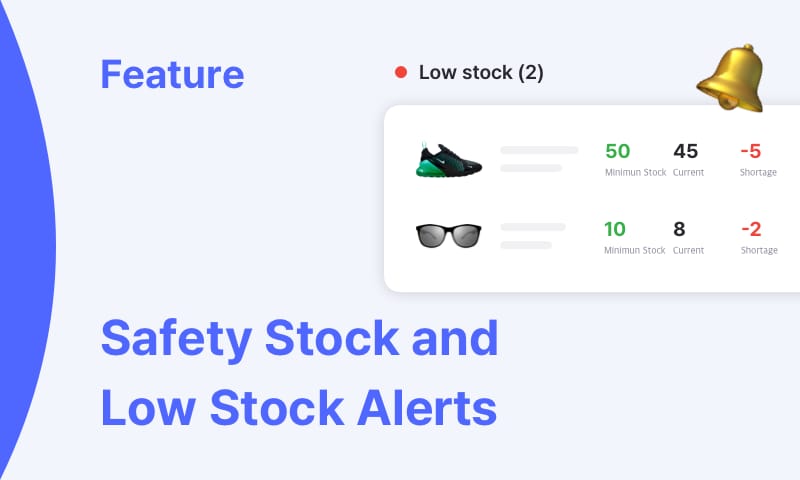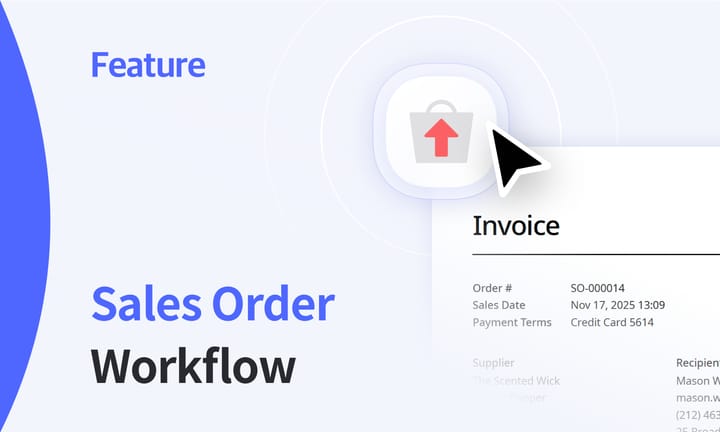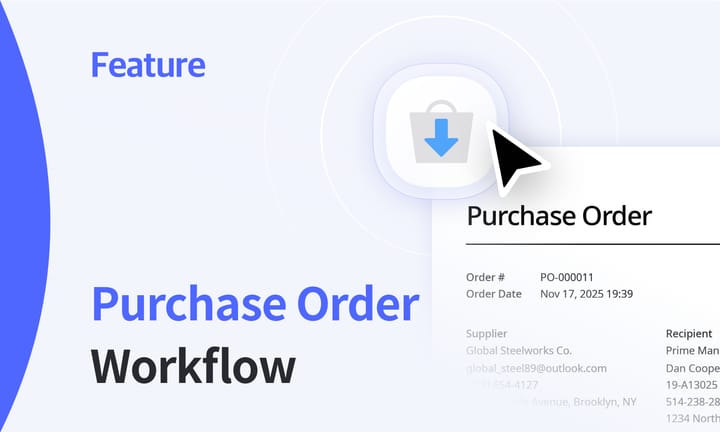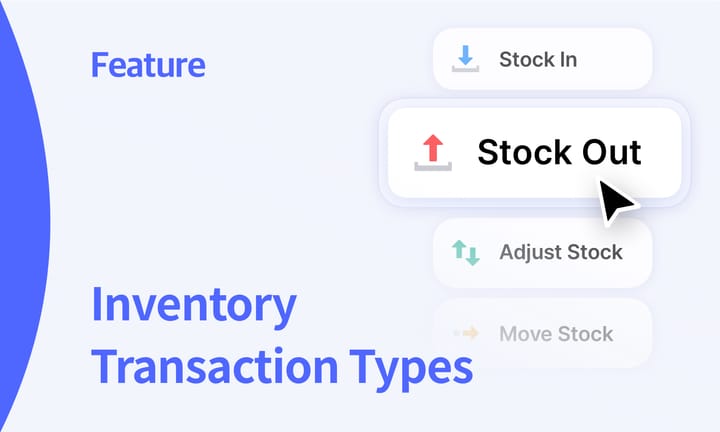Member Permissions in BoxHero: A Role-Based Guide
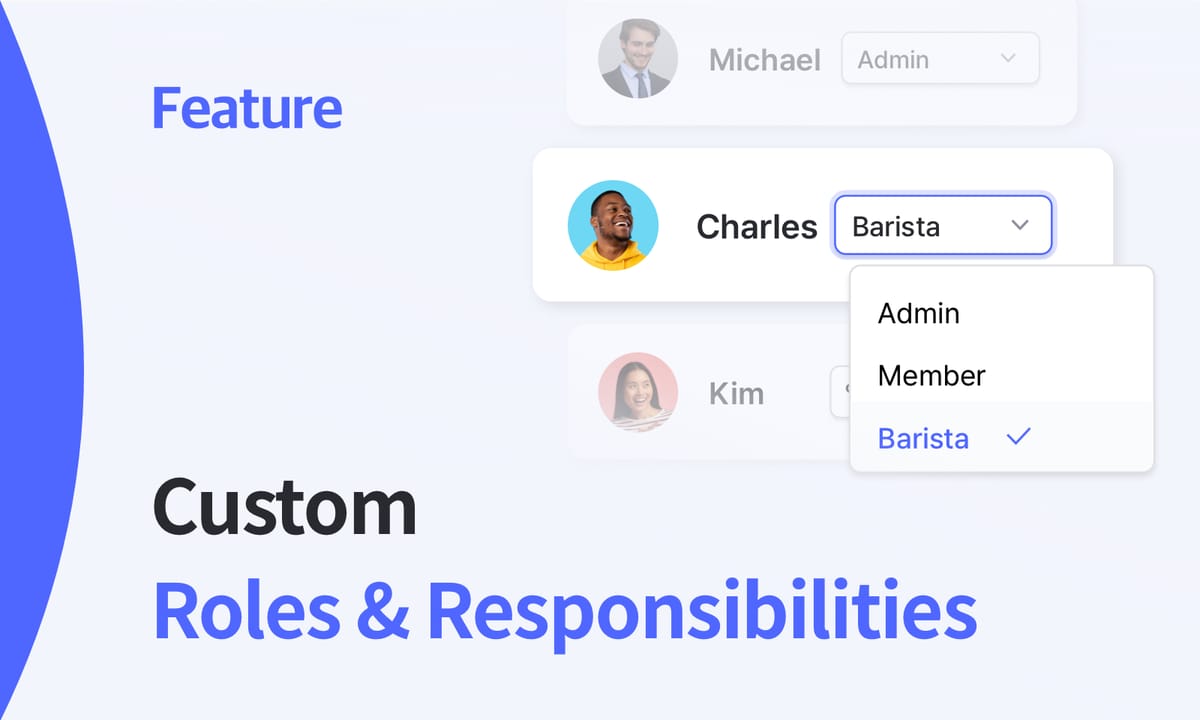
If you manage inventory with more than one person, permissions aren’t a “nice to have. They keep pricing and stock data clean, reduce mistakes, and make sure each teammate sees the parts of BoxHero that match their job.
This guide explains how BoxHero’s member permissions work, how to set them up in minutes, and how to map them to real roles like purchasing, receiving, inventory control, sales, and shipping.
To round things out, we’ll cover FAQs on what’s possible with permissions in BoxHero, the limits to keep in mind, and practical workarounds teams often use.
Quick Overview: Member Permissions 101
BoxHero lets you invite teammates to a shared team and assign roles with clear boundaries. You can start with simple roles like Admin, Member, and Viewer, then add custom permissions when someone needs more specific access.
This gives you finer control on who can edit cost and price fields, create and delete items, or manage billing and team access.
With member permissions, you can:
- Invite users by email or an invite link; assign a role on the spot
- Start with simple roles and refine with custom permissions (for example, "receive items only" or "view inventory without prices”)
- Remove or downgrade access instantly when someone leaves or changes roles

Settings > Members.Standard Roles in BoxHero
Use these as a starting point. Keep Admins to the minimum, give Members the tools for daily work, and reserve Viewer for read-only access.
1. Admin
- Who this fits: Owner, CEO, Head of Ops, trusted senior manager
- Responsibilities: Billing, member management, permission changes, and other high-risk settings
- In BoxHero: Full access, including inviting members and managing payment settings
2. Member
- Who this fits: Staff, stock clerk, store manager, warehouse lead, sales rep
- Responsibilities: Day-to-day work like
Stock In/Stock Out, item edits, inventory counts, basic reporting - In BoxHero: Limited access; can modify data but cannot change billing, manage members, or edit permissions
3. Viewer
- Who this fits: Auditor, seasonal staff who only need to check availability
- Responsibilities: Read-only access to items, locations, and transactions
- In BoxHero: Cannot make modifications to any team data
| Permissions | Admin | Member | Viewer |
|---|---|---|---|
| Invite and remove members | ✅ | ❌ | ❌ |
| Change roles and permissions | ✅ | ❌ | ❌ |
| Billing and payment settings | ✅ | ❌ | ❌ |
| Create, edit, delete basic data | ✅ | ✅ | ❌ |
| Manage cost, price, and orders | ✅ | ✅ | ❌ |
| Inventory Transactions (In / Out / Move / Adjust) | ✅ | ✅ | ❌ |
| View dashboards and reports | ✅ | ✅ | ✅ |
| Export data to Excel | ✅ | ✅ | ✅ |
Step-by-step: Setting up Member Permissions
Before you start assigning roles, it helps to think about who actually needs what level of access. Most teams do well with just three defaults—and then add custom roles for very specific cases like “receiving-only” or “sales-only.”
Here's how to set it up:
- Open
Settings>Members. This is where you’ll see your full list of teammates, their roles, and options to invite new people!

- Invite your teammates. Add members by email or send them an invite link.
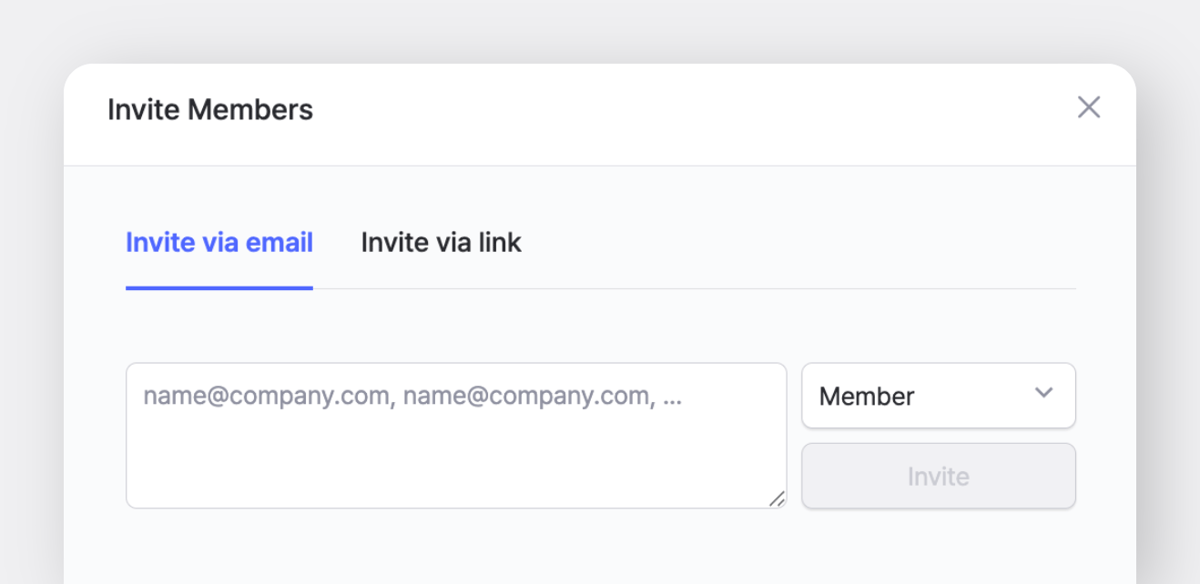
- Assign a role. Start with the three built-in roles:
Admin,Member, andViewer. Keep Admin access limited to just one or two trusted people. - Handle edge cases. If someone’s responsibilities don’t fit neatly into a default role (e.g., a staff member who only receives goods or a salesperson who only creates orders), create a custom role with the right permissions.

- Apply roles to individuals. Once your custom roles are defined, assign each person to the role that matches their responsibilities.


When to Use Custom Permissions: Everyday Roles & Examples
BoxHero's standard roles often cover most needs, but there are times when it makes sense to fine-tune access. In practice, inventory responsibilities usually fall into five areas: purchasing, receiving, stock control, sales, and shipping. Each uses BoxHero a little differently, and permissions help make sure team members only access the parts that are relevant to their responsibilities.
Here’s how permissions map to common roles:
1. Purchasing
Purchasing staff should be able to create and manage purchase orders, but not handle receiving, stock movements, or sensitive fields like item pricing.
✅ Allow:
- Basic Data:
Items,Attributes,Partners,Locations - Purchases & Sales:
Cost & Purchase Order - Reports:
Inventory,Dashboard,Summary,Past Quantity
❌ Block:
- Purchases & Sales:
Price & Sales Order - Inventory Transactions:
Stock In,Stock Out,Move Stock,Adjust Stock
• Default tax/discount settings in the Purchases & Sales menu.
• Partners directory for supplier contacts.
2. Receiving
Receiving staff need access to log items in, record partial shipments, and assign stock to locations. However, they shouldn’t be able to edit purchase orders.
✅ Allow:
- Basic Data:
Items,Attributes,Locations(to assign goods on arrival) - Inventory Transactions:
Stock In,Draft Stock In,Move Stock,Adjust Stock(for correcting discrepancies) Reports: optional if they need to confirm what was received
❌ Block:
- Purchases & Sales:
Cost & Purchase Order - Inventory Transactions:
Stock Out,Draft Stock Out(not their job)
3. Inventory Control
Inventory managers should be able to run counts, adjust discrepancies, and review dashboards and reports. Their role doesn’t require creating purchase or sales orders.
✅ Allow:
- Basic Data:
Items,Attributes,Locations - Inventory Transactions:
Adjust Stock,Move Stock,Stock In,Stock Out(if they handle counts) - Reports:
Inventory,Dashboard,Summary,Past Quantity
❌ Block:
- Purchases & Sales:
Cost & Purchase Order,Price & Sales Order - Inventory Transactions:
Draft Stock Out,Draft Stock In
4. Sales
Sales staff should be able to create sales orders, share Inventory Links with customers, and check availability. They don’t need access to purchase-side workflows or direct inventory edits.
✅ Allow:
- Basic Data:
Items,Partners(to handle customers) - Purchases & Sales:
Price & Sales Order Reports: so they can confirm sales history and availability
❌ Block:
- Purchases & Sales:
Cost & Purchase Order - Inventory Transactions:
Move Stock,Stock In(leave to receiving/warehouse)
5. Shipping & Fulfillment
Fulfillment staff need the ability to pick, pack, and complete shipments. They don’t need permissions for purchasing, pricing, or inventory valuation.
✅ Allow:
- Basic Data:
Items,Attributes,Locations(needed for picking/packing) - Inventory Transactions:
Stock Out,Draft Stock Out,Move Stock Reports: to confirm fulfillment history
❌ Block:
- Purchases & Sales:
Cost & Purchase Order,Price & Sales Order - Inventory Transactions:
Stock In(not their role),Adjust Stock(reserved for inventory controllers)
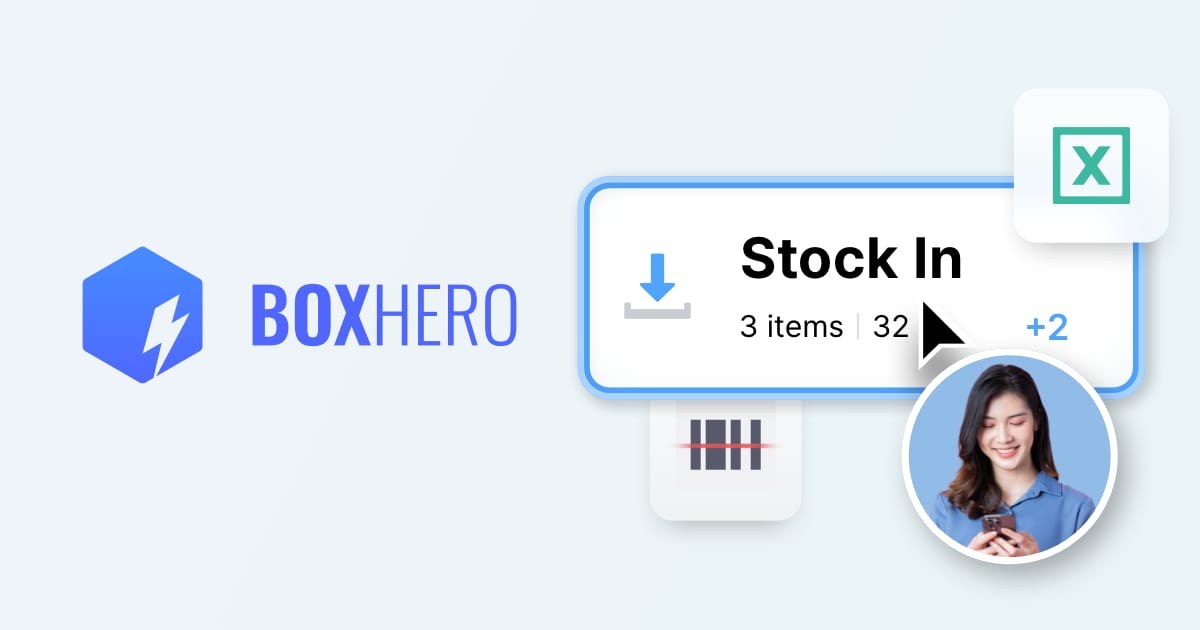
Frequently Asked Questions (FAQ)
- Can I let someone receive items but not see prices?
Yes! Create a custom role that allows access toItemsandStock Inand other transactions while hiding price/cost fields. - We want sales reps to show live availability to customers without exposing cost. Is that possible?
UseInventory Linkto share a filtered, read-only view that hides sensitive attributes. Sales reps can also create S.O.s and print them to PDF on the web. - Is there automatic reordering when stock is low?
Not yet. SetLow Stock Alertswith safety stock and then create a P.O. from Purchases. - Can I have more than one Admin?
You can, but keep the list short and review it quarterly. BoxHero's Member Settings supports multiple admins.
Final Thoughts
The goal of permissions isn’t to lock people out but to make sure everyone has just the access they need. Start with the built-in roles, add custom ones only when a job calls for it, and check in from time to time to see if anything needs adjusting.
Take a quick look at your Member Settings today. Keep Admins to one or two trusted people, make sure Members only have the access they actually need, and use Viewer for anyone who just needs to look things up.
A little structure here saves a lot of confusion later. 😉
RELATED POSTS
